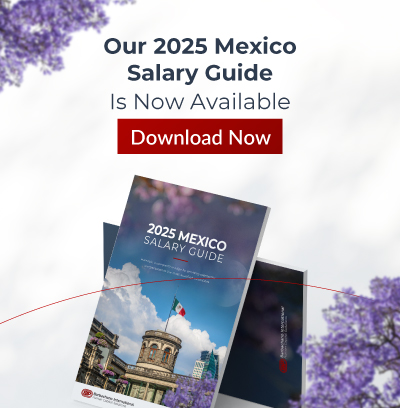
Hiring a great executive today takes more than just looking at their track record or where they went to school. With teams that span countries and cultures, what matters just as much, if not more, is how well someone can lead across differences. Cross-cultural agility has become a key part of what makes a leader effective. It’s not something extra. It’s something essential for companies that want to grow and stay competitive in a global market.
At Barbachano International, we see this come up all the time. We’re seeing more companies come to the same conclusion: being great on paper isn’t enough. They’re looking for leaders who know how to connect with people, even when they come from very different backgrounds. Leaders who can step into a new environment, listen first, and pick up on the unspoken rules that often shape how things work. It’s those quiet, cultural cues that can make or break how well a team performs or how smoothly a deal moves forward.
The Business Case for Cross-Cultural Agility
Cross-cultural agility is about more than adapting your leadership style. It’s about being able to read the room, understand what’s not being said, and lead in a way that connects with people who work and think differently than you do.
Leaders with this ability are often the ones who build stronger teams, handle conflict with more ease, and create space for different perspectives to be heard. A Harvard Business Review article shares that leadership isn’t just about confidence. In global settings, humility and curiosity often go a lot further. The best leaders know how to adjust their approach when trust is built differently across cultures.
As companies grow around the globe, especially across the U.S. and Latin America, this kind of agility becomes essential. Without it, good intentions get lost in translation, progress slows down, and important relationships get strained for reasons that have nothing to do with strategy.
Multicultural Markets Require Multicultural Mindsets
Consider the realities that many companies are facing. A U.S.-based firm acquires a manufacturing plant in Mexico. A global technology company launches a Latin America strategy with operations across Colombia, Peru, Brazil, Argentina, Chile, and Mexico. Or a high-growth startup in California brings on a bilingual executive to lead operations in the border region.
In each case, technical skill and business acumen are necessary, but they’re not enough. The leader in charge needs to understand how hierarchy is perceived differently, how decision-making timelines vary, and how relationships are built across cultures. What works in Silicon Valley may not translate well in Monterrey or Sao Paulo.
A McKinsey report emphasizes that leaders with multicultural mindsets drive better performance in global roles. They help organizations navigate ambiguity, inspire trust, and adapt strategies to local realities without losing sight of the bigger picture.
The Cost of Getting It Wrong
When cross-cultural alignment is missing at the executive level, the risks are high. Global initiatives stall. Promising expansions fall short. And turnover increases among both leadership and staff.
Executives who lack this skill often underestimate the importance of cultural context. They might push decisions too quickly in consensus-driven environments, fail to build relationships in places where trust takes time, or apply one-size-fits-all policies to teams with very different expectations.
This causes frustration and simultaneously costs money, slows growth, and weakens your employer brand, especially among global talent and clients who are paying attention to how you show up in different markets.
What Cross-Cultural Agility Looks Like
This isn’t about checking a box. It’s about identifying real capability. So what does cross-cultural agility look like in a leader?
- They ask thoughtful questions before making assumptions
- They adjust their communication style depending on the audience
- They show curiosity and respect for different ways of working
- They know how to align global strategy with local nuance
- They are willing to reflect on their blind spots
Often, these qualities come from lived experience, like working abroad, leading international teams, or growing up bilingual in multicultural environments. But they can also be developed intentionally with cultural training and the right mindset and support.
How to Assess It in Executive Candidates
Cross-cultural agility isn’t always visible on a resume. It shows up in how someone talks about their past work and how they respond to unfamiliar scenarios.
When you’re talking with candidates, go beyond the surface. Ask them about a time they worked with people from a different culture. What was tough about it? What helped them build trust? What would they approach differently now? The way they answer can tell you a lot about how they lead and how they handle unfamiliar situations.
Pay attention to whether they’ve led diverse teams, adapted their communication style to connect with others, or worked through challenges in cross-border settings. These experiences often speak louder than titles or credentials.
And if evaluating this kind of leadership isn’t something your team does every day, it helps to bring in a partner who does. At Barbachano International, we support our clients by looking at more than just the resume. We take the time to understand how a candidate leads, especially when the role calls for someone who can move between cultures with ease. Those are the things that often make or break success in a global or cross-border role.
A Strategic Advantage in a Global Economy
Organizations that prioritize cross-cultural agility at the top perform better across the board. They move faster in global markets. They build stronger teams. And they create inclusive cultures where people from different backgrounds can do their best work.
In a Deloitte study, companies with inclusive leadership were found to be six times more likely to be innovative and agile, and eight times more likely to achieve better business outcomes.
The bottom line is this: if your executive team only reflects one way of thinking, you are not just missing out on talent. You are leaving growth on the table.
Hiring for the Future, Not the Familiar
Being able to lead across cultures isn’t just a nice extra: it’s become a key part of what makes an executive effective today. For companies that want to grow across borders and build leadership teams that are ready for what’s next, it’s no longer optional.
Fortunately, this talent already exists. There are many bilingual, bicultural leaders in the U.S. and Latin America who know how to navigate different perspectives and bring people together. The challenge is recognizing those values and creating the kind of environment where they can thrive.
So if you’re hiring for your next executive role, ask yourself: Are we looking for someone who fits the mold, or someone who can connect across cultures and move the business forward? The answer might improve more than just your team, it could shape your future.

By Octavio Lepe
Executive Vice-President
Octavio is the search practice leader for Executive Management, Food & Agriculture, Sales & Marketing, and D&I in the Americas.
Barbachano International is the premier executive search and leadership advisory firm in the Americas (USA, Mexico, Canada, and Latin America) with a focus on diversity and multicultural target markets. Outplacement, Exe

